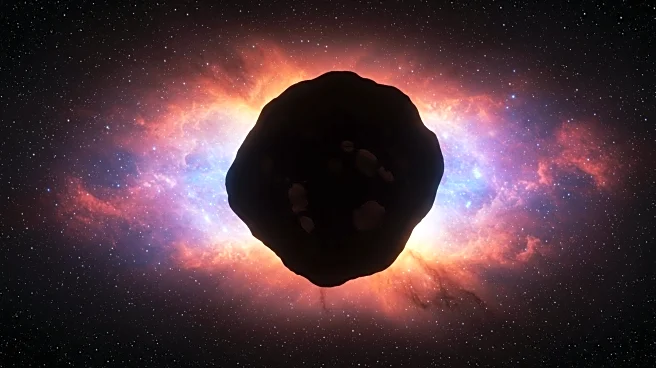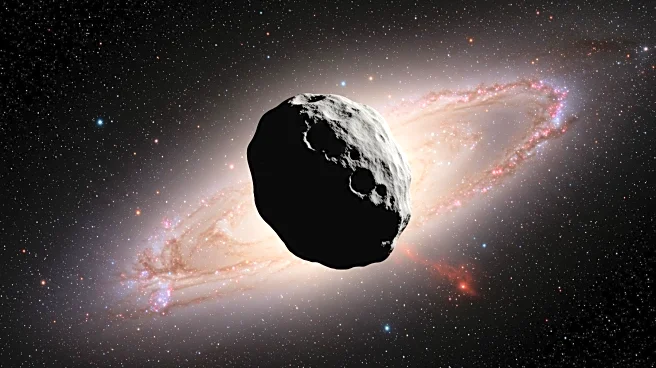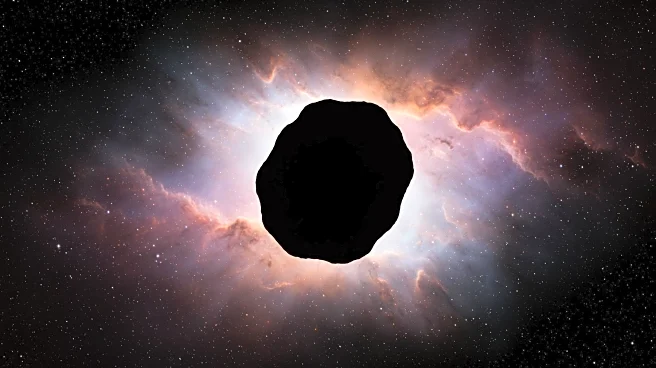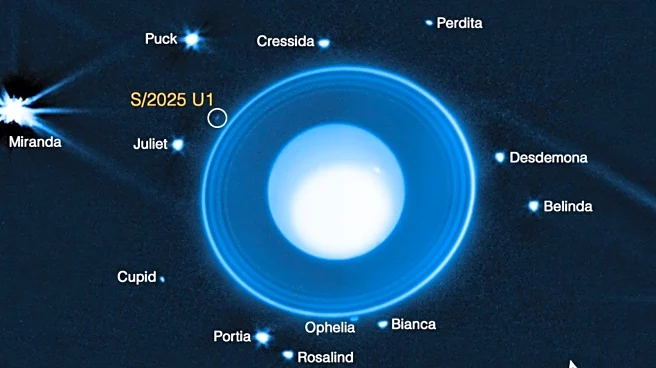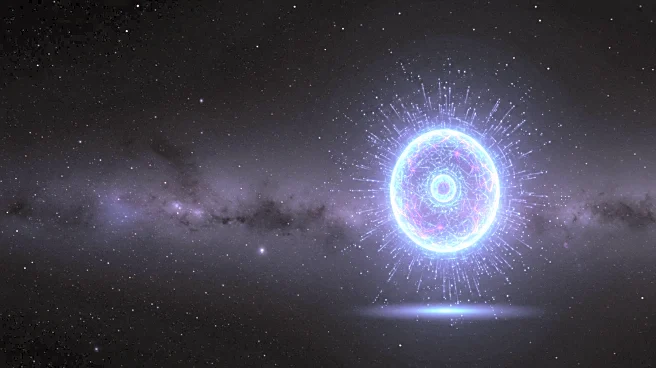What's Happening?
NASA's OSIRIS-REx mission has provided new insights into the asteroid Bennu, revealing its complex origins and transformations. The samples collected from Bennu in 2020 show that the asteroid is composed of a mixture of dust from the solar system, organic matter from interstellar space, and pre-solar system stardust. These materials have undergone significant changes over time due to interactions with water and exposure to space conditions. The findings, published in several scientific papers, indicate that Bennu's parent asteroid was formed from diverse materials originating from different regions, including near the Sun and beyond the solar system. The research highlights that some of Bennu's materials survived various chemical processes and a collision that led to its formation.
Why It's Important?
The study of Bennu's samples is crucial for understanding the history and evolution of the solar system. The findings suggest that Bennu's parent asteroid accumulated materials from distant regions, providing insights into the distribution and mixing of materials in the early solar system. This research also sheds light on the processes of space weathering and the impact of micrometeorites on asteroids. By analyzing these samples, scientists can better understand the formation and evolution of other asteroids and planetary bodies. The mission's success underscores the importance of collecting and studying extraterrestrial samples to gain a deeper understanding of our cosmic origins.
What's Next?
NASA plans to continue analyzing the Bennu samples to further unravel the history of the solar system. The next significant milestone will be the return of Moon rocks by the Artemis III mission, which will provide additional data for comparative analysis. The ongoing research will help refine models of asteroid formation and evolution, potentially influencing future space exploration missions and the search for resources in space.
Beyond the Headlines
The findings from Bennu challenge previous assumptions about the uniformity of material distribution in the early solar system. The discovery of diverse origins for Bennu's materials suggests that the solar system's formation was more complex than previously thought. This research also highlights the importance of international collaboration in space exploration, as demonstrated by the partnerships with the Canadian Space Agency and JAXA's Hayabusa2 mission.
